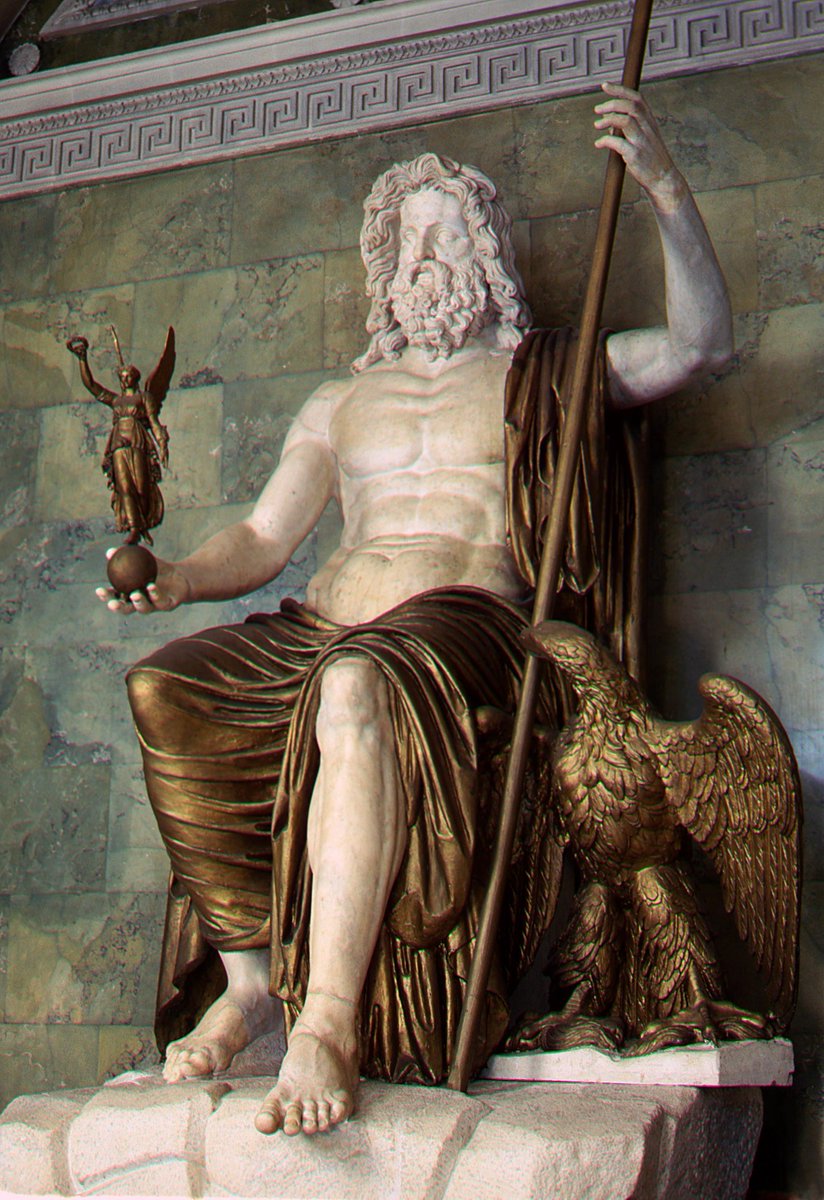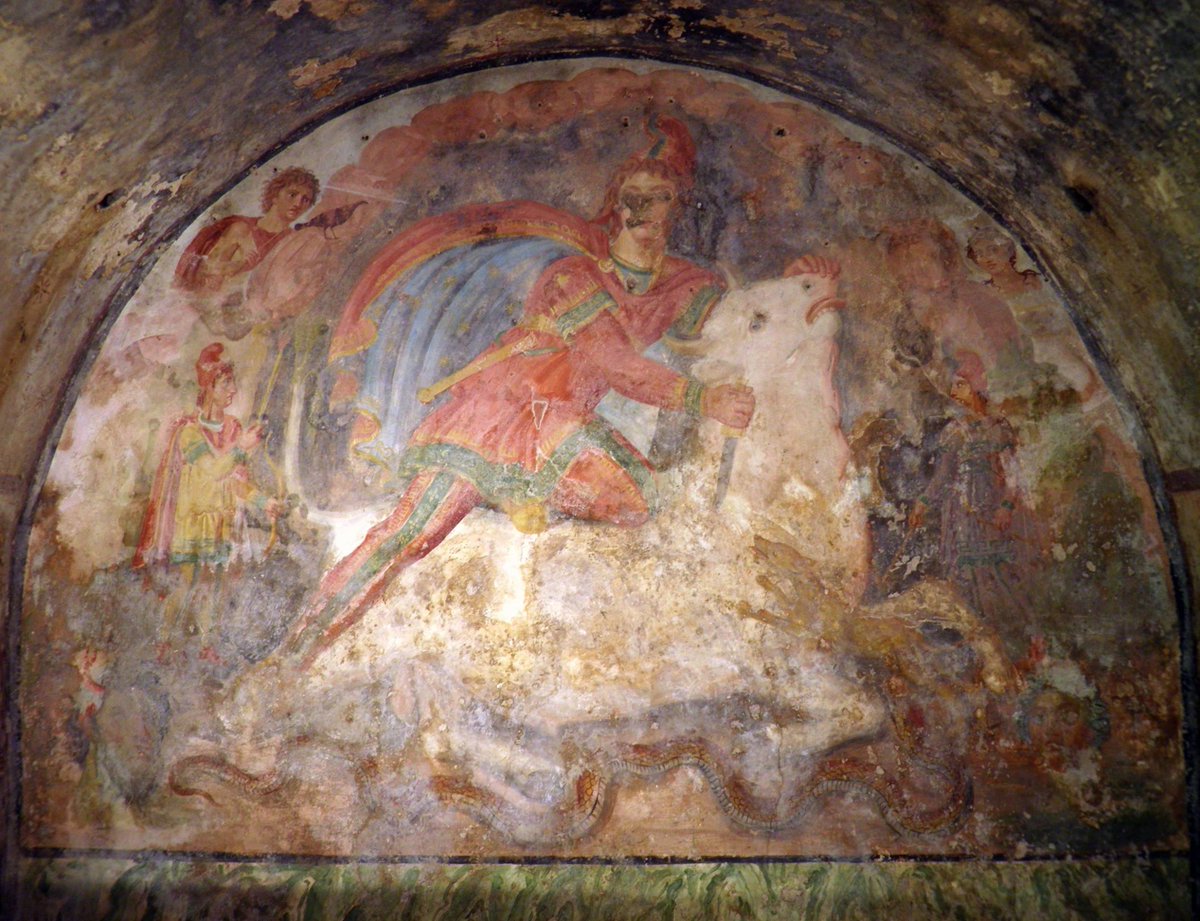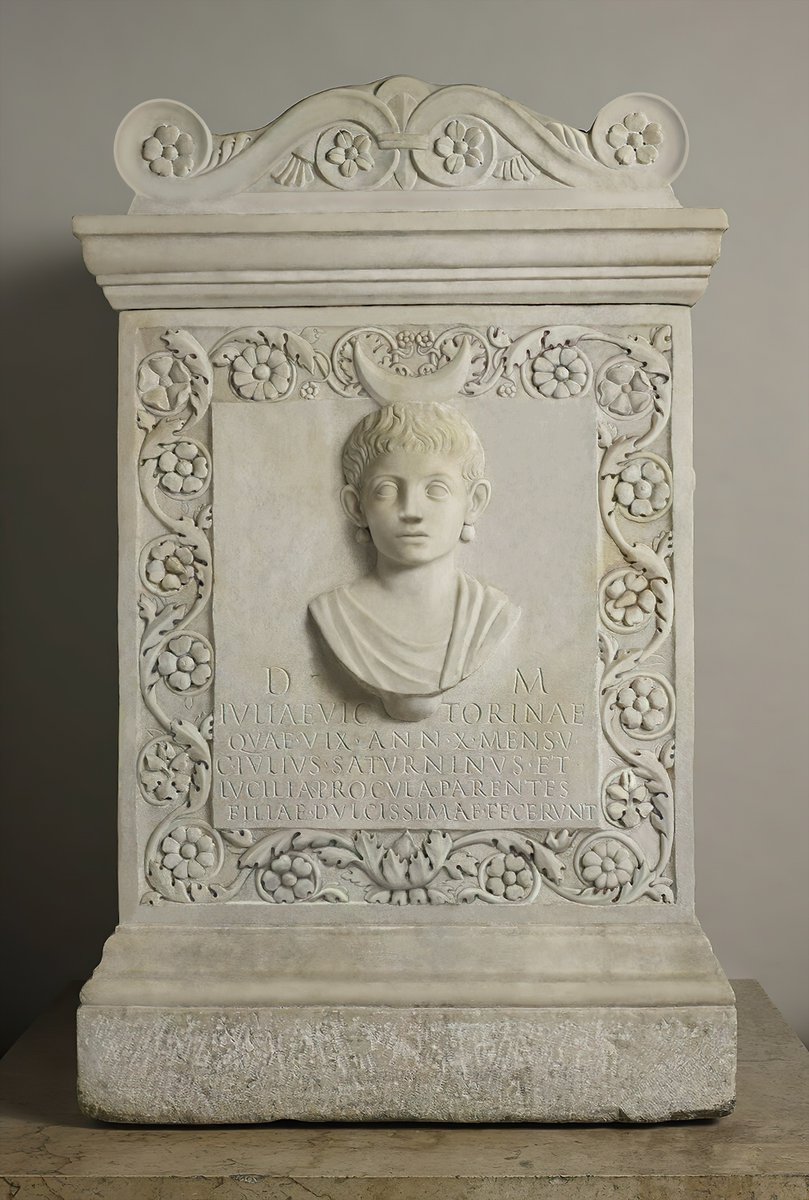
The emperor is dead *and* immortal! And a blonde. My newest digital restoration is Augustus as Jupiter, the king of the gods. A melding of Roman realism with Greek Classicism. A lot to unpack here … #polychromy #archaeology #art 1/ 



The statue was unearthed in Cumae, a wealthy Roman city near Naples, once a Greek colony and home to the prophesying sybil. The restorers were able to use ancient coins and cameos depicting the Olympian #Zeus and Augustus as Jupiter to guide their reconstruction work ... 2/ 



Coins like the one below, depicting Augustus as Jupiter Terminus, holding a winged thunderbolt and Victoria. The goddess is also shows up on the reverse of the coin that Augustus minted after the battle of Actium: Victoria on a globe, holding a wreath. 3/ 



Another example of the deified Jupiter-Augustus is the stunning Gemma Augustea, showing Divus Augustus, Jupiter’s eagle under his throne. The Capricorn, Augustus’ birth sign, floats above. (📸 James Steakley) 4/ 

The model for this sculpture is the colossal chryselephantine statue of Zeus at Olympia by Phidias. It’s even depicted in Ubisoft’s ‘Assassin’s Creed Odyssey’ game. *Its robe was made from panels of gilded glass and carved with animals and lilies*. 😍 5/ 







A huge *16 ton* Roman Flavian sculpture of Jupiter in the same format sits near our Augustus in the Hermitage. They were once part of the same collection in the 19th century. Even George Washington was sculpted in this format, scandalizing American society! (📸 Google Arts) 6/ 



And let's not forget Monsieur Ingres' portrayal of the more modern French emperor, #Napoleon. The iconography connects directly back to the Imperial imagery of ancient Rome and to the Greek Olympian Zeus. 7/ 

Suetonius, writing decades after Augustus’ death, writes that the emperor was 'inclining to golden', but no mention is made of his eye color. Therefore, I’ve created both blue and brown-eyed versions - select your poison. His hair has had gold dust applied, as one does. 8/ 



The inspiration for the colors of Augustus’ robe was the fresco of the enthroned Jupiter from the Casa dei Dioscuri, in Pompeii. Appropriately, Imperial purple! 9/ 

The pain of the bling! Painting shiny gold orbs is *hard*. But ultimately, after a lot of trial and error, I think it works with the iconography of a (now) gilded sculpture of Victoria and the addition of a golden eagle, the symbol of Jupiter. 10/ 



The largest part of underlying photos for this piece were taken by Sergey Sosnovskiy, and can be seen on the ancientrome.ru website.
• • •
Missing some Tweet in this thread? You can try to
force a refresh














